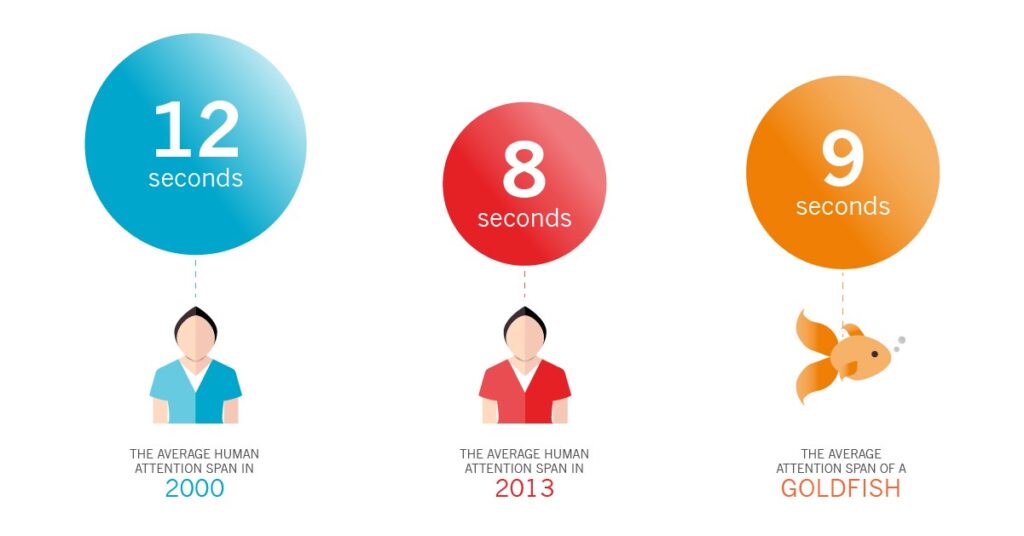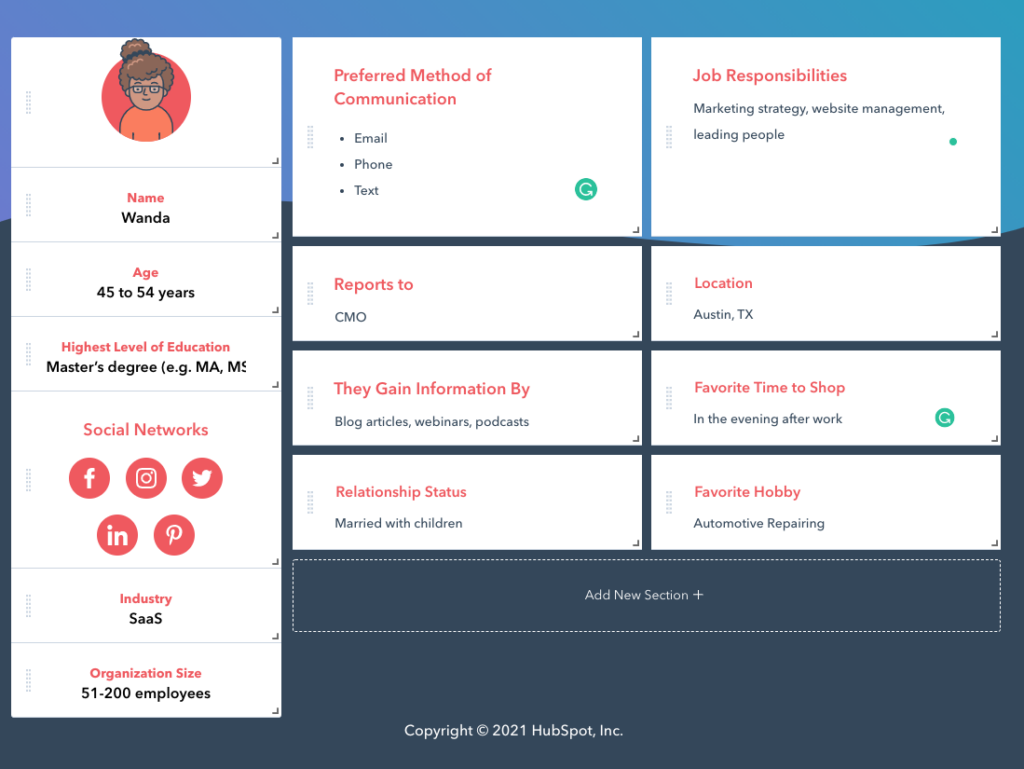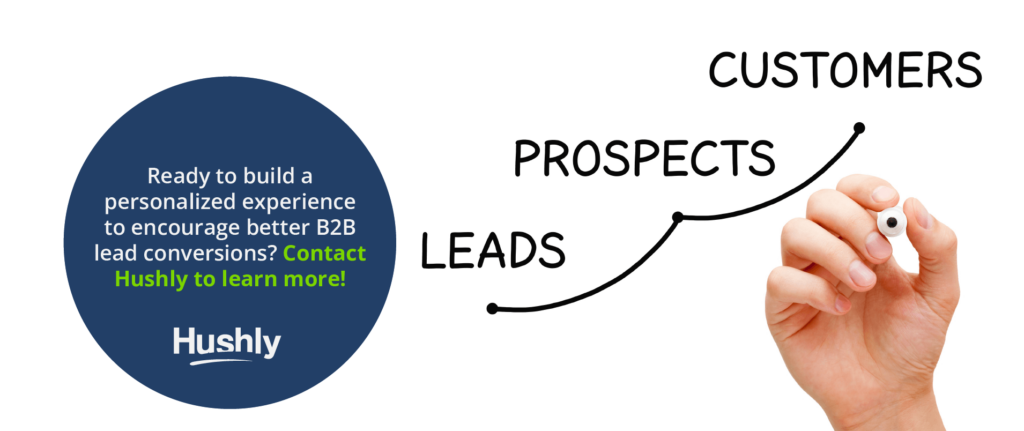Filters
Content Type
Topic
What is B2B Website Personalization: Your Go-To Guide
B2B is a slightly different animal when it comes to website personalization. For one thing, there’s less of a chance to create personal relationships with your audience. You’re also dealing with a higher volume of people who have relatively niche interests. Still, there are a lot of opportunities to create personalized experiences for your visitors.
If your goal is to create a user experience that prioritizes each person that visits your website, then website personalization is an absolute must-have.

What is Website Personalization?
Website personalization is the practice of tailoring a website’s content and design to better match the specific needs of each individual visitor. It’s a strategy that can profoundly impact a user’s experience, which is why it’s such a popular feature among high-quality websites. That said, 77% of B2B marketers agree that website personalization is crucial for building customer relationships and providing them with the best experience possible.
Website personalization is the process of identifying individual preferences and behaviors and then using that information to tailor a website’s design, copy, and layout to better match the visitor’s preferences.
This lets users experience websites in a more intuitive and memorable way than traditional web design. It also means that you have the opportunity to build deeper connections with your audience. That, in turn, can foster increased loyalty and lower abandonment rates.
Studies show that 85% of buyers say they are much less likely to engage with brands that don’t take the time to personalize the initial touchpoints (such as their brand’s website). That’s why it’s such a crucial B2B marketing strategy.
Why Website Personalization is So Important for B2B Brands
When it comes to B2B marketing, personalization is crucial for creating a sense of connection with your audience. It also has the power to lower your marketing costs while improving results.
Website personalization has countless benefits for B2B brands, but one of the most significant is the opportunity to build stronger relationships with their audience. When you prioritize the needs of each individual, you foster a sense of trust that can increase engagement, lower abandonment rates, and boost sales.
By personalizing the experience you provide each visitor, you’re increasing the chances of them spending more time on your site and reducing overall bounce rates. With the average person’s attention span only measuring about eight seconds, the more relevant information you can put in front of them – the better.

Source: Medium
When you think about it, making a person feel like they’re the only person your brand is designed for is one of the most powerful forms of connection. By understanding the unique preferences of your audience, you’re better able to provide them with the information and products they’re looking for. This builds trust, which in turn increases conversion rates.
5 Ways to Implement Website Personalization
If you’re not using website personalization to engage your website visitors, you’re missing out. With that said, implementing personalization requires a significant investment of time and resources. If you’re looking to improve conversion rates and customer satisfaction, here are five ways to implement website personalization:
1. Know Who You’re Targeting
The first step in any website personalization strategy is identifying the people you’re trying to reach. This means figuring out who your audience is, what their preferences are, and what they’re looking for.
This can be accomplished through a variety of methods, including:
- Market research
- Surveys
- One-on-one conversations, etc.
As you begin to gather this information, it’s essential to keep it organized so that you can identify trends and make data-driven decisions moving forward. The best way to organize this information is through the use of audience personas.

Source: HubSpot
These personas should be designed with the explicit purpose of understanding your audience as individuals. They should also be based on data, not speculation. This makes it easier to track results and optimize your approach as needed.
Personas should include all relevant information, including:
- Age
- Education level
- Industry
- Organization size
- Geolocations, etc.
The more information you can collect, the more complete persona you can create. The more complete the persona, the more effective your website personalization strategy will be.
2. Have a Mobile-Friendly Site
Mobile devices now make up approximately 63% of all organic search engine visits, meaning that a significant portion of your audience is accessing your site using a mobile device. This means that you need a mobile-friendly site if you want to ensure that your website is accessible to all of your visitors, regardless of device.
A mobile-friendly site is optimized to provide a great user experience regardless of the device used to access the content. This includes having a responsive design and ensuring that your site loads quickly.
3. Strategically Placed Personalized Exit-Intent Popups
Another way to improve your website’s performance is strategically placing personalized exit-intent popups. These are quick mini-offerings designed to increase conversions by capturing visitors’ attention on the verge of leaving your site.
Studies show that, on average, conversion rates for pop-ups are about 3.09%. However, when they’re personalized to each visitor, they increase conversion rates to almost 10%. This is because visitors are more likely to complete a task when they feel like the popup is specifically designed to help them.
4. Creation of Self-Nurturing Planning Pages
In the world of website personalization, creating self-nurturing landing pages is an excellent way to improve your strategy. These are landing pages designed to nurture visitors through a series of steps designed to help them accomplish their goals, regardless of whether or not they end up purchasing a product.
5. Have an Adaptive Content Hub
Finally, if you’re looking to create a website designed to provide only the more relevant information at the fingertips of each visitor who comes to your site, you’ll want to have an adaptive content hub. This is a content management system that automatically generates new pages based on the topics that are of the most significant interest to visitors. This allows you to create a highly personalized experience that is both effective and efficient.
Bring Personalization to Your Website with Hushly
Hushly is an AI-powered platform that helps marketers create highly personalized experiences for their website visitors. With Hushly, you can bring personalization to your website with just a few clicks of the mouse.
Ready to get started? Then schedule your demo today!
The post What is B2B Website Personalization: Your Go-To Guide appeared first on Hushly.



